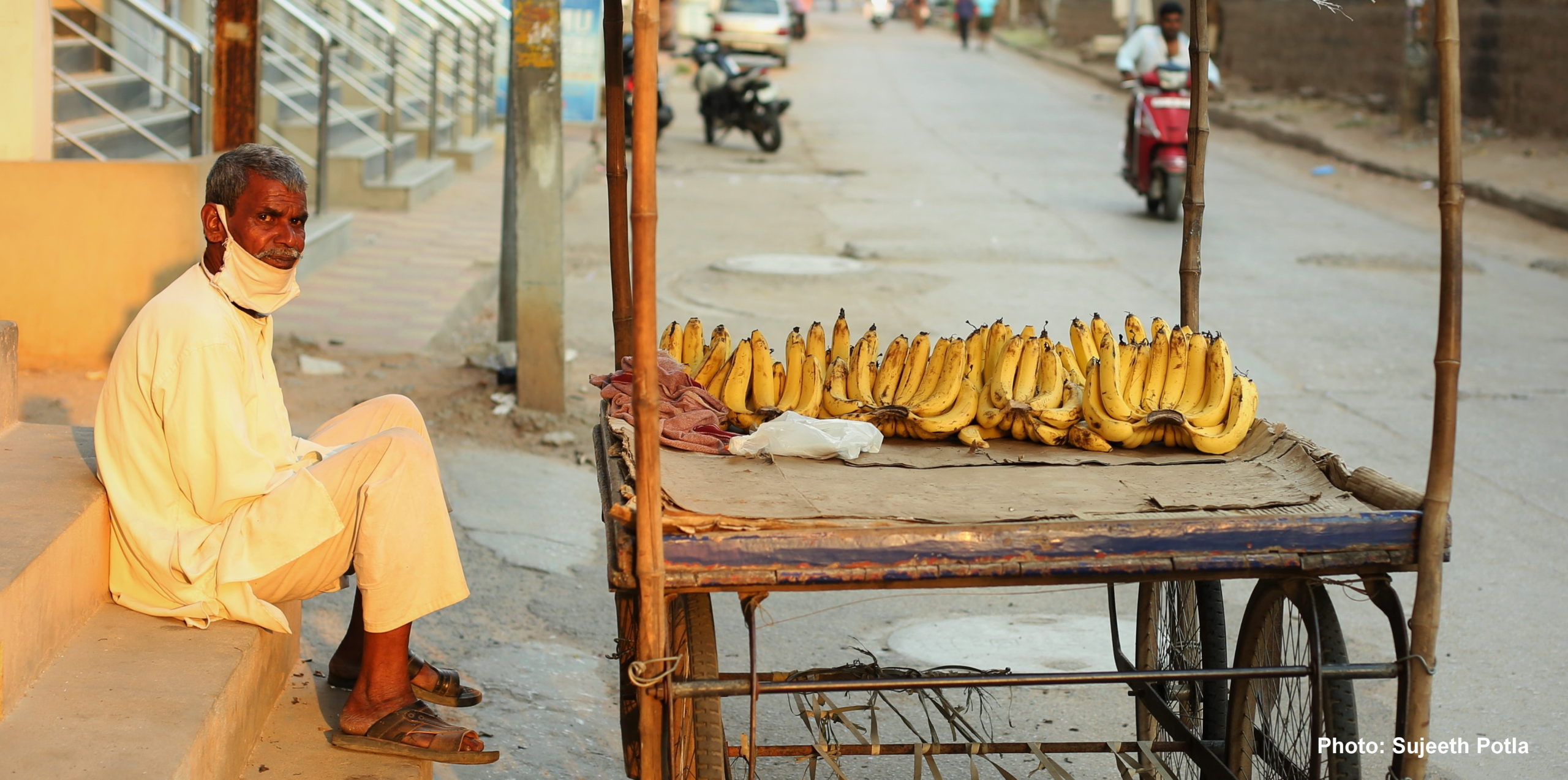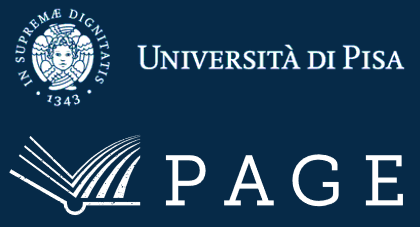Blog series: Sabrina Arcuri|How has COVID-19 affected food poverty? Challenges and perspectives
Written by Sabrina Arcuri
It is true that COVID-19 hit with no discrimination, but its consequences are inevitably harder for the worse off. Low-income households, homeless people, the elderly, children living in food insecure households who relied on school meals before the pandemic. These are, without being exhaustive, among the most vulnerable categories of individuals, which more than any others risk seeing the health emergency turn into a food emergency. The lockdown and mobility restrictions are causing many lose their sources of income, as for the self-employed, those in precarious jobs and workers on the black market. Moreover, in most cases they end up also being excluded from employment-related social protection measures, including employment insurance, if any. As a result, food charities operating in many wealthy countries have seen a sharp increase in demand for food and other basic needs. This occurs in the US, where miles-long queues of cars wait at food banks premises, in the UK, where it comes after years of gradual rise in food banks use, in Canada and Italy alike, wherever there were strong networks of charitable organisations in place since decades.
Unfortunately, at exactly the same time when many more people are turning to charitable organisations to feed themselves and their families, a shrinkage of resources is affecting both the amount of food recovered and the number of volunteers which food charity used to rely on. In most cases, indeed, it was retired people who constituted the labour force of voluntary organisations, but they are currently asked to shelter at home for their own safety. On the food side, daily ordinary supply sources of food to charities had to temporarily shut down their activities: restaurants, hotels, catering services have been closed everywhere (and reopening will not be an easy task). Shops and supermarkets, at the same time, have been facing an increase in grocery shopping and their supply of unsold food has become even less predictable. In the UK, for instance, Christmas-like levels of demand have been observed and, even without any shortage of food, stockpiling and panic-buying have been causing disruptions to retailers, struggling to restock shelves that are emptied too quickly. Extraordinary food collections and calls for support had therefore to be made by food banks in Europe and beyond. There has however been a big solidarity response from the public: many young volunteers are willing to do their part and help with home delivery of food parcels, while private donors are stepping up, which guarantees the system keeps going. Even 160 famous photographers donated images to sell for the Trussell Trust, the UK largest food bank. Nonetheless, lack of PPE, logistics disruptions and increasing costs have been reported by the Federation of European Food Banks.
In Italy, charitable food provision is put under strain for the second time in less than ten years (previous time being the 2011-13 economic downturn and austerity). Now as then, Caritas [1] has been in Italy at the frontline of the emergency since the early days of the pandemic and carried out a survey aimed at understanding how its local agencies were coping with COVID-19. Preliminary results of the survey show a doubling in the number of people who turn to Caritas Counselling Centres (Centri di Ascolto, NDA) for the first time, i.e. a 114% increase compared to last year. Growing requests concern basic necessities, such as food, but also cash support in order to keep paying bills and rents. An increased need for psychological support and listening has been observed, especially from the elderly, as many are being cut-off of their social networks and are more vulnerable to loneliness and social isolation. In addition, and strictly related to this emergency, Caritas has been collecting spare laptops and tablets to help children in need keep up with their school activities, as well as providing signposting support for accessing social protection schemes.
Italian public authorities have taken steps for securing access to food during the lockdown and have made so relying on the support of an established network of charitable organisations, namely the FEAD (EU Fund for European Aid to the most Deprived) network. For instance, a recent ordinance by the Civil Protection Department included charitable organisations partners in the FEAD network in the purchase and distribution of 400 million EUR worth food vouchers for municipalities to be destined to households in need. Such measure was strongly supported by Italian municipalities, where social services departments have been left with “the task of identifying the beneficiaries and corresponding benefits allocated, targeting those households mostly hit by the COVID-19 emergency and those in need, in order to meet their basic needs” (author’s own translation from Art. 2 of the ordinance). In this regard, it is worth mentioning the interesting case of Caritas Pisa, which closely monitored how the corresponding municipality has been managing applications for food vouchers and raised concerns, especially related to the criteria for selection of entitled beneficiaries, e.g. residence and absence of other benefits. As demand for food assistance is expected to increase in the next months, the most recent decree by the Italian Government – Decreto Rilancio, lit. Relaunch Decree – allocates 250 million EUR to the Italian share of the FEAD. While announcing the measure, the Ministry of Agriculture highlighted its double aim: to address the emergency food system put under strain and provide support to food producers left with no market outlets for their products. In parallel, the Government has pledged to allocate 25 billion EUR as support for workers [2] and passed the Emergency Income (Reddito d’Emergenza), reportedly intended to target households in need who are excluded from other benefits, although not yet clear is how this will be operationalised and for how long [3].
As recent and timely research highlighted, charitable food provision encompasses two (ideal) types of interventions, i.e. “emergency” and “non-emergency” support, depending on several key characteristics. These include whether the initiative is meant to address an acute or chronic lack of access to food and whether it provides stopgap support or ongoing food assistance outside of the primary market. Contrary to non-emergency food charity, the emergency food system is intended to meet an acute food crisis and is supposed to be temporary, but our recent experience shows it is decisive in order to expand the reach out of public measures. Despite food banks appearing as resilient, they are raising their voices to call for stronger action by governments as they lack the resources to face the crisis on their own. Moreover, and most notably, they are not designed to take on the responsibility to provide long-term food support in response to persistent financial deprivation.
It is not surprising that, once again, food security gains political salience at the times of crisis. In the very first phase of such an emergency, governments ought to make sure that immediate needs are met and food access is secured for everyone, especially for the most vulnerable groups. It is however critical, while the country moves forward into Phase Two of the emergency, to have a look at pre-crisis levels of food insecurity, poverty, and social exclusion. Before the virus outbreak, indeed, 5 million Italians were living in absolute poverty, and, amongst these, 1.260.000 were children. These figures will be all but decreased in the last two months.
The presence of a long-standing food charity apparatus is surely a sign of community strength and solidarity to help cope with such an emergency, but it shows at the same time the weaknesses of a social security system which is – was – leaving many behind. Moreover, new crises, same old problems: not surprising was also the leap back of the Fund for the Most Deprived from social policy to agricultural matters in the Italian landscape of recovery measures. Surely, it is again crucial to make sure that the emergency food system can count on a reliable food supply while preventing farmers from throwing away tons of perfectly edible food in such a harsh moment for food demand. But enormous amounts of food used to go wasted during ordinary operations of the supply chain, generating 88 million tons of food waste per year only in Europe.
What we need to keep in mind more than ever is that pre-crisis levels should not be our goal. The current crisis is providing us with an opportunity to rethink the way things work and build them up almost from scratch, always keeping the focus on the profound socio-economic – and, therefore, also food insecurity – inequalities that the emergency has inevitably exacerbated. Inequality is not something destined to stay in our societies. Whatever the resources displayed, economic recovery plans and long-term policies must target the root causes of inequalities or these will only end up reinforced.
Whether the crisis will provide a window of opportunity for change or rather generate just another chain of partial responses, it remains to be seen yet.
[1] Caritas is a church-based organisation working at an international level, counting on a widespread presence in Italy through 218 dioceses, in turn, divided into several parishes. Its activity is aimed at supporting the most vulnerable people and it is a key actor in charitable food provision in Italy.
[2] Funding to the CIG benefit is included. CIG is for Cassa Integrazione Guadagni, a benefit for furloughed workers.
[3] The Relaunch Decree will need approval from the Parliament before being adopted and it will thus presumably go under an additional round of amendments.


